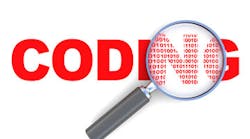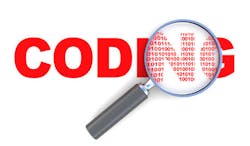Thursday Troubleshooter: Disappointment in new dental code D4346
Do you have a tough issue in your dental office that you would like addressed? Each week the experts on Team Troubleshooter will tackle those issues and provide you with answers. Send questions to [email protected].
QUESTION: I’m disappointed in the new code D4346 and the insurances that are paying it. I thought it was going to be a code for patients needing scaling and root planing (SRP), but not diagnosed with bone loss, and we as clinicians would be paid accordingly. The code only pays the same as a prophy and we’re doing the work we would already be doing on patients needing SRPs. I see it as a replacement for full mouth debridements (FMD) more than SRPs and the removal of subgingival calculus. What are your thoughts on this?
ANSWER FROM PATTI DIGANGI, RDH, BS, author of DentalCodeology:
The new D4346 gingival inflammation code has brought opportunity to dental practices across the United States. We can finally treat gingivitis after decades of merely dumping gingival inflammation into the same category as health.
That’s the good news. At the same time, trying to integrate the new code into our already well-honed systems can lead to confusion. I didn’t expect to write a book on a single code, yet most practitioners will probably need my book, A Gingivitis Code Finally! I receive all kinds of questions about this new code.
Documentation for D4346
This new D4346 code can potentially ensure earlier intervention and disease prevention while also boosting the bottom line of a practice. Yet we need to make changes in our routines. There are many parts to understand, but for my answer we will look at the part of the code’s description that specifies, “. . . in the absence of periodontitis . . .” The code is not age-based, which means we now need to show the absence of periodontitis for any age. This means a perio chart for children as well as current radiographic images.
The 2015 American Academy of Periodontology (AAP) Special Task Force report on the diagnosis of periodontitis includes minimally documenting six readings for probing and recession and radiographic bone height. Clinical attachment loss (CAL) is the pocket depth plus recession and/or bone loss. Normal bone height measured from the alveolar crest to the cemento-enamel junction (CED) should be 1.5 mm to 2 mm. This can only be determined with radiographic images. For D4346, inflammation must also be documented.
Coding accurately
I recently received another question about D4346: “When we switched from phosphor plates to digital sensors, we started to have problems with taking bitewings on children. The sensor is so bulky that they cannot tolerate the normal bitewing position. In order to get posterior images, the assistants have the children keep their mouths open. We take four images vs. two bitewings. I understand we need to code accurately for what we do. Should we code for four PAX or two bitewings?” Copies of the images were sent with the question.
Kudos to this practitioner for asking. New codes like D4346 give us the opportunity to renew and examine our systems. The truth is that the images taken were neither periapical nor bitewings; they were inadequate as either. For them to be accepted as either one was not a great choice. No doubt taking images in small mouths takes practice and patience. The story here is less about coding and more about the learning curve with new technology. Much of how practices handle a new code will come through staff training.
Hand-me-down training
In my most recent book, ROMA Manual on Dentistry, Dr. Benson Baty and I take a humorous look at the hand-me-down training that happens in so many practices. (ROMAstands for right outta my ass.)Our book takes a light-hearted approach to dentistry while challenging assumptions and traditions and looking at the evidence. We throw in some ethical lessons for good measure.
Once formal school days are over, consistent training can become questionable in practices, especially with new technology. In the increasingly digital world, this can be a problem. When one practice moved to digital images, one of the hygienists was not there for the training, which tends to happen in a multiple hygiene practice. The staff wasn’t concerned because the absent hygienist took the best traditional images. The training was a full day.
When the absent hygienist returned, her lesson lasted about 10 minutes. The results of this hand-me-down training did not go well. The hygienist fought the change to digital technology. She was the best at the traditional system but hated the uncomfortable feeling of the change. The practice had choices to make. They could go back to the phosphor plates, or the hygienist could help the assistants. Both were just more hand-me-down training.
This example illustrates the importance of staying up to date. Make sure your team learns the new code D4346. Just like new technology, it might take some time out of your regular schedule. Don’t let anyone slip through the cracks, and make sure your provide more than hand-me-down training. Yes, there’s a learning curve, and I’m here to answer your questions along the way. Feel free to reach out to me here.
RECENT THURSDAY TROUBLESHOOTERS
'Toxic' coworker drags down whole dental office
Should RDH file complaint against dentist?
How to have the bad breath conversation with a coworker
Do YOU have a tough issue in your dental office that you would like addressed?
Send your questions to [email protected] for the experts to answer. Responses will come from various dental consultants, as well as other experts in the areas of human resources, coding, front office management, and more. These folks will assist dental professionals with their various issues on DentistryIQ because they're very familiar with the tough challenges day-to-day practice can bring.
All inquiries will be answered anonymously each Thursday here on DIQ.
For the most current practice management headlines, click here.
For the most current dental headlines, click here.
About the Author
Team Troubleshooter
This column features questions from everyday people who work in dental practices, who have issues they would like addressed by the experts. It no longer runs regularly, but the questions sent in the past still apply to dental practices today. Search "Troubleshooter" on DentistryIQ to read more.

